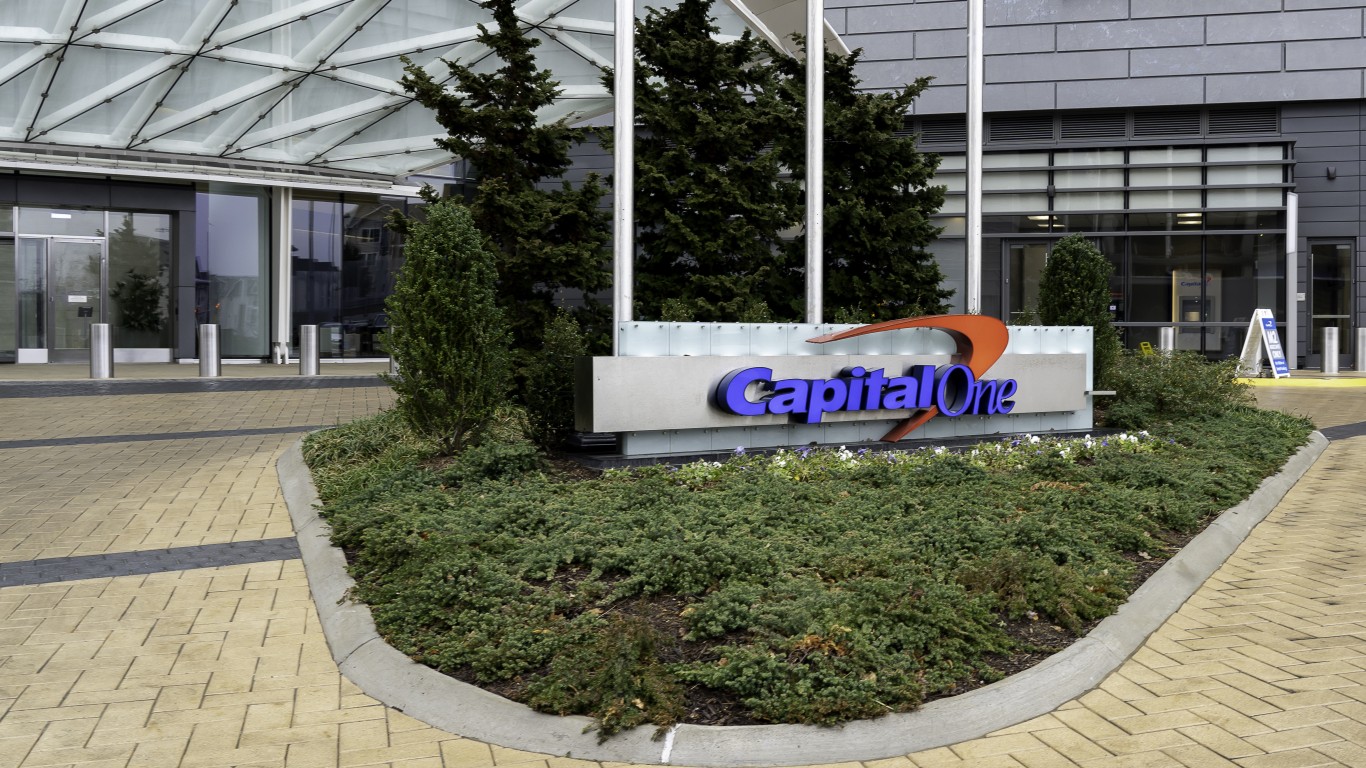
The discussion highlights the dominance of the “Magnificent Seven” stocks—Microsoft (NASDAQ: MSFT), Amazon (NASDAQ: AMZN), Google (NASDAQ: GOOGL), Tesla (NASDAQ: TSLA), Apple (NASDAQ: AAPL), NVIDIA (NASDAQ: NVDA), and Meta (NASDAQ: META)—in the market.
The focus then shifts to Amazon’s performance, particularly in retail. Despite increased competition from companies like Walmart (NYSE: WMT) and Shopify (NYSE: SHOP), Amazon has regained its dominance in the retail sector.
Why Amazon Is the Magnificent 7’s Most Dominant Stock Today
Here are some highlights from the discussion about how Amazon has quietly begun dominating retail in a way it hasn’t in years.
- Amazon’s retail business boomed after the Covid pandemic began, but after the first couple of quarters of Covid, its dominance of retail began to fade.
- That’s because you had smaller companies like Shopify rise – and the pandemic also forced competitors like Target and Walmart to more fully embrace ecommerce and also in store pick-ups ups .
- Data from Morgan Stanley illustrates this situation. According to Morgan Stanley, in the initial months after Covid, Amazon was picking up more than 50% of all incremental retail sales, and their strongest competition was Walmart.
- However, by the third quarter of 2021, Amazon’s dominance in picking up incremental retail sales had faded dramatically. In fact, the company was passed by Walmart in this period.
- You can look back at Amazon’s stock chart in this period and they were struggling. That was because of broader market conditions, but also because of slowdowns in both cloud computing and their retail business.
- However, Amazon has recently begun reapturing its dominance in the retail space. In the recent quarter Amazon collected 28% of all incremental retail sales, while Walmart is now trailing far behind the company.
- At the end of the day, Amazon is largely three companies now. It’s a cloud computing company, a retailer, and an advertising company.
- The cloud computing company uses Amazon as a company as its first and best customer, but realistically it could be separated.
- But Amazon’s retail operations feed the rest of its business. Without retail, Amazon wouldn’t have an advertising business that should top $50 billion in high-margin sales this year
- And Amazon’s retail business also enables Prime, which has more than 200 million global members
- So while a lot of focus on Amazon is on these new growth areas, at the end of the day retail still drives its business to a high degree.
- If you’re an Amazon investor… The combination of cloud sales accelerating thanks to AI demand and Amazon retail regaining its mojo is powerful.
- Amazon is a top 5 holding, and it’s a stock that even at today’s prices, I’d be happy to continue adding.
Transcript:
All right, Eric, it’s a magnificent seven stock world and we’re all just living in it.
So we’ve got Microsoft, Amazon, and Google.
They’re all dominating cloud computing.
Tesla has risen thanks to growing market share in EVs.
I think the Model Y is actually one of the best selling cars in the world last year, which is an incredible feat, not just EVs, cars, period.
We know that Apple absolutely dominates smartphone profits.
They basically, that single company basically represents 100% of the profits in the entire industry.
The NVIDIA-dominated AI boom, we’ve all seen that stock chart.
We all wish we could have been in it a decade ago.
We could go on here.
The point is, this is a magnificent seven world.
It’s dominating everything we’re going to invest in right now.
But one of these stocks is crushing its competition and very few investors are paying attention.
What’s going on?
Yeah, and I just wanted to talk about Amazon and retail.
There’s so many videos that talk about what’s going on with Amazon and AI.
There’s a lot of discussion about their advertising growth, but sometimes lost behind all of this is how Amazon is doing kind of its core retail zone.
So Amazon boomed thanks to COVID.
In many ways, it began losing some market share right after that initial lockdown phase.
And that’s because you had smaller companies like Shopify rising, and you also had Walmart and Target finally really needing to embrace the challenge of e-commerce and also things like pickup in stores.
So the competition increased quite a bit because of COVID.
Now I want to show you a chart that displays this situation.
And I know that might be a little bit blurry here, so I’m going to walk you through it.
But this is research from Morgan Stanley and the orange line is Amazon.
Well, the blue line is Walmart and it’s showing who is picking up market share on incremental, that’s new retail sales.
And as I was describing earlier in that first quarter of 2020 as COVID started, Amazon, it’s picking up market share at an incredible rate, grabbing more than 50% of incremental spend on retail.
But then the chart changes.
And by 2021, the third quarter there, you actually have Walmart beginning to get more market share than Amazon.
And it’s worth noting at this point, Amazon stock was struggling in early 2022.
It had two factors hitting it.
It had to slow down the decelerations, cloud computing revenue, and also what’s going on here that it’s retail performance wasn’t as dominant.
Now I want to take this chart one step further.
And really zoom in here so that you can see what’s going on.
And this is what’s going on today.
And not only has Amazon regained its mojo, it’s now back to picking up 28% of incremental retail sales last quarter.
But it’s also beginning to leave its number one competitor, which is Walmart, in the dust.
Now, Austin, at the end of the day, I think the value for Amazon is largely $3.
It’s cloud computing, it’s retail operation, and Amazon’s also become an advertising company.
The cloud computing segment, that could probably operate on some.
But the thing that investors need to understand is how much Amazon’s retail operations still feed the rest of its business.
Without retail, Amazon wouldn’t have that $50 billion advertising business that’s extremely high margins.
And its retail segment also feeds Prime, which has more than 200 million global members.
So I think a lot of the focus on Amazon, like I said at the beginning of this video, it’s focused on these areas and sometimes how they’re doing in retail kind of gets lost in the shuffle.
But if you’re an Amazon investor-
Eric, one of the things that I think is really important here to point out, you talk about retail driving the rest of this business here and we see that Amazon, of course, is beating Walmart in Walmart’s terrain.
But if we go even one click lower here, it’s important to remember that a large part of Walmart’s retail sales are groceries.
And groceries is something that Amazon has never won in but they almost don’t want to because that is the narrowest of margin that is a very very hard industry to make money whereas Amazon is largely selling you know shelf stable products.
So when we see Amazon crushing these retail growth and you know beating Walmart at their own game not only are they doing that they’re beating them with products that you want to be selling while Walmart is left selling groceries and playing that perishable game.
And it’s very important.
I think Walmart is still the biggest grocer in the US.
They do a very good job at it.
But the point is, when it comes to profits and not only is Amazon winning, they’re winning by selling the type of products you want to sell in retail.
Yeah, I mean, that’s an excellent point.
They’re getting 28% market share and they’re they’re only getting on the market share that they want.
So, you know, the key here is right now we’ve got another reacceleration thanks to AI and cloud computing.
We have Amazon becoming that 800 pound gorilla in retail again these are two powerful catalysts coming together at the same time.
Even with the recent rise in Amazon stock it’s a top five holding for me personally and I would be more than comfortable continue adding to my position at these price levels.
Thank you for reading! Have some feedback for us?
Contact the 24/7 Wall St. editorial team.





